#GivingMeansProgress
GLA's Timeline of Accomplishments highlights the impact we make together
When you give to GLA you impact Lyme patients, their families, and the whole community by helping to fund groundbreaking research, and the free education and support programs we offer. Scroll below to to see how we have brought the Lyme community closer to a cure.
Without your support, none of this would be possible.

Timeline of Accomplishments
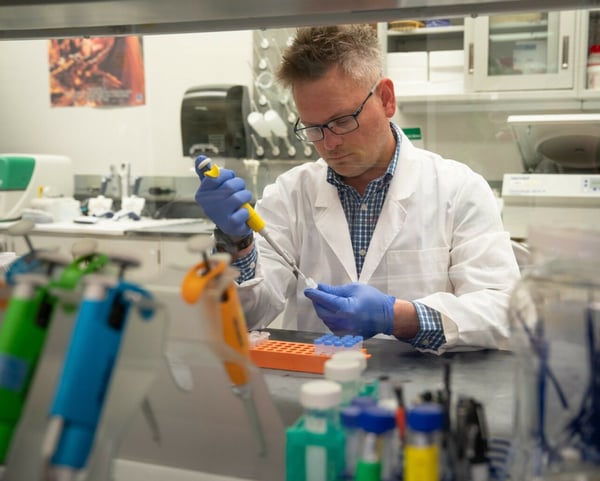
- GLA resumes holding its annual Research Symposium in person where some of the most distinguished researchers and clinical innovators studying Lyme and other tick-borne diseases share their work and discuss innovative diagnostic tests, potential therapeutic measures, and key knowledge gaps and advances.
- One of GLA’s funded investigators, Dr. Brandon Jutras at Virginia Tech, was awarded $1.2 million from the Department of Defense (DoD) and $2.7 million from the National Institutes of Allergy and Infectious Diseases to further develop a rapid direct diagnostic test for Lyme disease. Groundwork for this DoD proposal was supported by GLA.
- Dr. Utpal Pal, a GLA Scientific Advisory Board member, and Dr. Chrysoula Kitsou, a previous GLA-funded Blackman Fellow at University of Maryland, publish an article on the deer tick genome. This information is accessible to all researchers and will be used to better understand tick biology and create tick-borne disease interventions.
- GLA holds its second annual charity golf tournament and raises $215,000 for tick-borne disease research and awareness.
- GLA-funded investigator Dr. Choukri Ben Mamoun at Yale University helps decode the genome of Babesia duncani, a parasite that causes babesiosis. By uncovering more about the genome, scientists are armed with information to develop diagnostic tests and new treatments.
-1.jpeg?length=600&name=Gala%20PR%20Image-21%20(1)-1.jpeg)
- GLA resumes holding its annual gala in person and raises over $1.85 Million to support programming and research funding.
- GLA has awarded over $16 million for Lyme and tick-borne disease research to date.
- GLA holds its first golf outing fundraiser and raises over $200,000. It will become an annual event.
- GLA-funded investigator Dr. Lise Nigrovic at Boston Children's Hospital publishes an article showing how a clinical prediction algorithm can help doctors differentially diagnose children suffering from Lyme arthritis versus septic arthritis. This helps spare pediatric Lyme patients from the invasive and painful surgical joint procedure that children with septic arthritis must undergo.
- Dr. John Aucott at Johns Hopkins University and Dr. Charles Chiu at UCSF are developing a genetic test to help diagnose early-stage Lyme disease. They hope to expand the test to chronic Lyme disease next.
- Dr. Lise Nigrovic at Boston Children’s Hospital received $1.8 million from the National Institutes of Allergy and Infectious Disease to compare the effectiveness of oral doxycycline versus intravenous ceftriaxone for treating Lyme meningitis in children. Previous GLA-support helped her secure this funding to answer this critical question.
- GLA-funded investigator, Dr. Brandon Jutras at Virginia Tech, competes in the LymeX Diagnostics Prize competition and is one of ten Phase I winners.
- Ionica Sciences publishes first proof-of-principle study demonstrating the ability to diagnose early Lyme disease by direct detection of specific Lyme bacteria protein.

- GLA has awarded over $13 million for Lyme and tick-borne disease research to date. This year, GLA funded 8 new projects in innovative diagnostics, immunology and immune dysregulation, neurological Lyme disease, and coinfections such as babesiosis.
- As of 2021, 70 GLA-funded discoveries have been published in 40 internationally-respected scientific and medical peer-reviewed journals.
- A drug discovery program funded by GLA at Northeastern University uncovers a novel antibiotic, Hygromycin A, that has the potential to cure early Lyme disease and prevent it from becoming a chronic condition. Learn more.
- GLA-funds a groundbreaking study that links Lyme disease to psychiatric disorders. The two-year study was published in The American Journal of Psychiatry.
- Monica Embers, a GLA-funded investigator at Tulane University provides provocative and unequivocal proof of the presence of B. burgdorferi in the post-mortem brain tissue of a chronic, neurological Lyme patient who was treated with antibiotics. This proves persistent spirochetes can be found even after treatment. The patient also had Lewy body dementia. Dr. Embers is also funded by GLA to expand upon this study and search for the presence of B. burgdorferi in autopsy samples from other Lyme disease patients as well as those who suffered from Alzheimer’s disease and other forms of dementia.
- GLA holds its first virtual gala, The GLA Global Gala. It raises over $1 million.
- Dr. Nicole Baumgarth from UC-Davis obtains a $2.7 million five-year grant from NIH, using data from early studies (supported by GLA) to extend her investigations of antibody dysfunction in the mouse model of Lyme disease.

- Avril Lavigne, GLA Board member and internationally famous musician, brings attention to Lyme disease by fundraising with a successful virtual #FightLyme concert presented by Global Lyme Alliance.
- Due to the Covid-19 pandemic, GLA holds its annual research symposium online, with 21 speakers sharing updates of their work. The conference covered subjects such as the neuropsychiatric symptoms of Lyme disease, the immune response to B. burgdorferi, the dissemination of B. burgdorferi in infected mice, and the replication of bacteria.
- GLA funded scientists continue to do research during the height of the COVID-19 pandemic. GLA awards its first grant to study Babesia infection with an aim to develop a new diagnostic test.
- GLA continues to support research and funds 3 new projects investigating innovative therapies, immune dysregulation, and neurological Lyme disease.

- GLA launches the first-ever Peer-to-Peer Mentor Program to support people suffering from Lyme and other tick-borne illnesses. To date, there have been 90+ mentors and 500+ mentees who have accessed the program, free of charge.
- Furthering GLA's focus on children, Dr. Lise Nigrovic of Boston Children’s Hospital publishes a series of important articles on the diagnosis of Lyme disease in kids. With sustained support from GLA, she expands the GLA-funded Pedi Lyme Net into six US states.
- The GLA annual NYC gala raises $2.5 million to support GLA programming and research activities.
- Ranger Ready Repellents chooses GLA to partner with to help prevent Lyme disease.
- GLA teamed up with Brown University and co-authored a publication that estimated the post-treatment Lyme disease population at approximately 2 million by the end of 2020.
- GLA launches the Lyme disease symptom tracker app as part of the US Department of Health and Human Services Tech Health Sprint. This app helps patients document their symptoms.

- GLA launches a national Lyme Education Ambassador Program (LEAP) to raise public awareness of Lyme and to teach prevention in communities. The program, which began with 11 volunteer ambassadors nationally, has now expanded to over 100 Ambassadors in the U.S., Canada, Mexico, and Europe, giving GLA a global reach.
- GLA surpasses a cumulative $10 million in total research program funding.
- The Columbia University Lyme and Tick-borne Disease Research Center, led by Dr. Brian Fallon, publishes an article identifying increased suicide ideation among Lyme patients. This study reinforces case reports of elevated suicide risk in patients with persisting Lyme disease.
- Dr. Kim Lewis finds that vancomycin is extremely effective at killing the Lyme bacteria in both the growing and dormant phases of Lyme disease.
- GLA is honored to be the first Lyme disease organization to be named an official charity partner of the NYC marathon, and develops a team of runners, who are Lyme patients raising money for GLA.
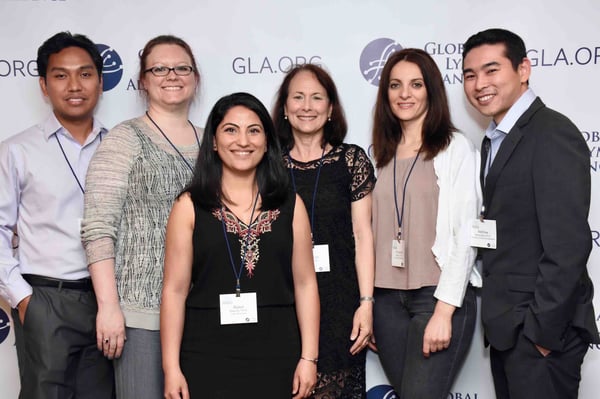
- GLA awards Deborah and Mark Blackman Postdoctoral Fellowships. These prestigious awards, worth a total of $1.125 million, support five Ph.D.-level early career scientists.
- GLA awards more than $2 million in research grants in 2017.
- Dr. Zhang identifies that essential oils from oregano, cinnamon bark and clove bud have a very strong capability to kill persister forms of B. burgdorferi (in vitro). In vivo studies are commencing.
- GLA begins a partnership with Ivy Oaks Analytics to target summer camps for tick-bite prevention/education strategies as well as pesticide treatment to protect campers. The program has exceeded 150 camps.
- A first-ever venture philanthropy initiative begins with Ionica Sciences and Cornell University to develop a highly sensitive Lyme disease diagnostic test. In contrast to most Lyme disease tests that rely on the detection of antibodies against B. burgdorferi, the bacterial cause of Lyme, the Ionica test directly identifies bacterial proteins in the blood of infected people.

- GLA awards $1 million in the 2015-16 cycle for research grant awards. These projects are chosen on the basis of high scientific quality, after being reviewed by GLA's scientific advisory board.
- Dr. Charles Chiu, of the University of California-San Francisco, finds that the transcription in peripheral blood mononuclear cells is altered in Lyme disease patients compared to healthy controls. This shows a distinctive immune response to Lyme disease.
- GLA initiates and funds a groundbreaking conference at Cold Spring Laboratory on the topic of Diagnostic Tests for Lyme Disease, that brought together the NIH, CDC, FDA, and academic researchers from the country. They determined that the widely used two-tier Lyme disease test is inadequate and new tests using modern techniques need to be developed. As a result, biotech and pharmaceutical companies start focusing on a new generation of Lyme disease tests.
- In an effort to educate physicians about Lyme disease, GLA develops and offers an accredited continuing medical education program, “Pediatric Tick-borne Disease: Diagnosis and Management.” More than 5000 health care professionals access the program.
- Dr. Armin Alaedini of Columbia University discovers an antibody to the VLSE protein on the Lyme bacteria that is present in post-treatment Lyme disease patients but not in patients that have recovered. This is a potential diagnostic test for PTLDS.

- LRA and TBDA join forces, merging to form Global Lyme Alliance. This is the largest nationwide, private, 501(c)(3) nonprofit dedicated to Lyme and tick-borne disease eradication.
- GLA hosts its inaugural fundraising gala in NYC at Cipriani 42nd Street with David Foster as the headliner.
- Kim Lewis, Ph.D. of Northeastern University publishes a GLA-supported study showing that B. burgdorferi, the bacterial cause of Lyme disease, forms antibiotic-tolerant persister cells in vitro. This confirms the findings of GLA-backed research at Johns Hopkins University that the Lyme bacteria can survive antibiotics by changing form.

- A research team led Dr. John Aucott at Johns Hopkins University identifies inflammatory biomarkers in the serum of Lyme disease patients. This is one of the first studies to systematically begin documenting immune response profiles in prospective studies of Lyme patients from diagnosis, through treatment and beyond.
- A study led by Dr. Brian Fallon at Columbia University shows variability in detecting Lyme disease between four different laboratory tests, using blood samples from post-treatment Lyme disease patients. This shows the need for better diagnostic tests.

- GLA supported a partnership with investigators at University of Medicine and Dentistry of New Jersey–New Jersey Medical School, Johns Hopkins University and The Rockefeller University that showed that the rash caused by the Lyme bacteria can come in many shapes, not just the bulls-eye rash.
- Research by Dr. Armin Alaedini at Columbia University identifies elevated interferon alpha in the serum of Lyme disease patients. This activity does not change after treatment by ceftriaxone, an antibiotic which would be expected to kill bacteria, indicating persistent inflammation.

- Greenwich, Connecticut based, Time for Lyme, is renamed Lyme Research Alliance (LRA) reflecting its historical focus on science and research.
- New York City based, Turn the Corner Foundation, changes it's name to Tick Borne Disease Alliance (TBDA), with the goal of fundraising aimed at advocacy for curing tick-borne diseases.
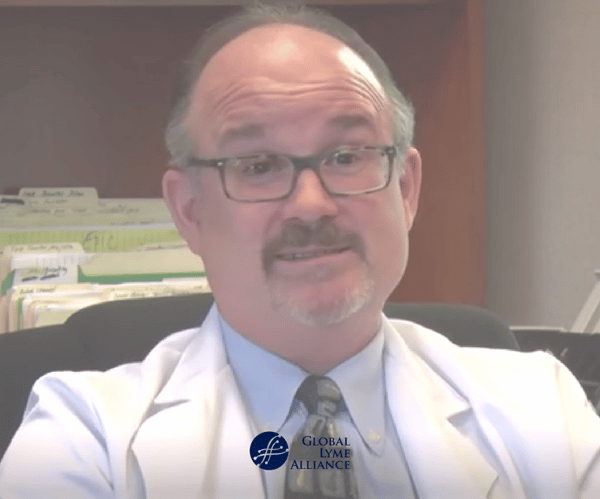
- John Aucott, M.D., of Johns Hopkins University School of Medicine was awarded grants by GLA to examine the impact of Lyme disease on patient’s lives. Dr. Aucott published the GLA-funded SLICE studies that proved that approx. 10-20% of patients treated early with antibiotics continue to suffer from symptoms even after treatment. Dr. Aucott publishes a paper that delineates the intense suffering and great impact Lyme disease can have on patients.
- Armin Alaedini, Ph.D. of Columbia University shows that Lyme disease patients have evolving antibody responses to a protein on the surface of the bacteria that causes Lyme disease. This demonstrates a continuing immune response to the bacteria as they change their surface protein conformation during disease, a strategy used to evade the host immune response.
- Proteomics studies led by Steven Schutzer, M.D. are published showing that proteins from the cerebrospinal fluid of chronic fatigue patients differ from those of post-treatment Lyme disease patients. These results suggest that despite similar symptoms, the two diseases are distinct. The study provides additional proof that post-treatment Lyme disease is real.
- Dr. Robert Thatch of Washington University finds the Lyme bacteria in the Eastern gray squirrel. Previously, the focus had been on deer and mice.
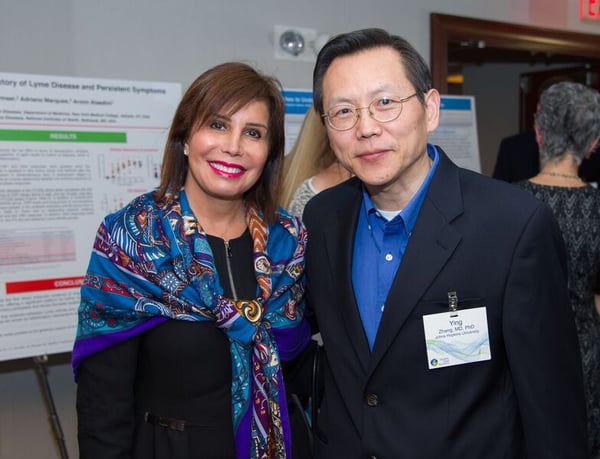
- Ying Zhang, M.D., Ph.D. of Johns Hopkins University begins a series of studies to identify drugs that target persister forms of B. burgdorferi in vitro. He goes on to show that anti-persister drugs like pyrazinamide, especially in combination with other antimicrobial drugs, may be useful in vivo. These studies could potentially lay the groundwork for future testing with animal models of Lyme disease, which if successful, could lead to new treatments for patients.
- GLA invites all research grantees and scientific advisors to a symposium to share data and collaborate. This symposium becomes an annual event. By 2019, over 50 researchers from at least 30 institutions attend. Numerous new collaborative studies are initiated from discussions at these meetings.
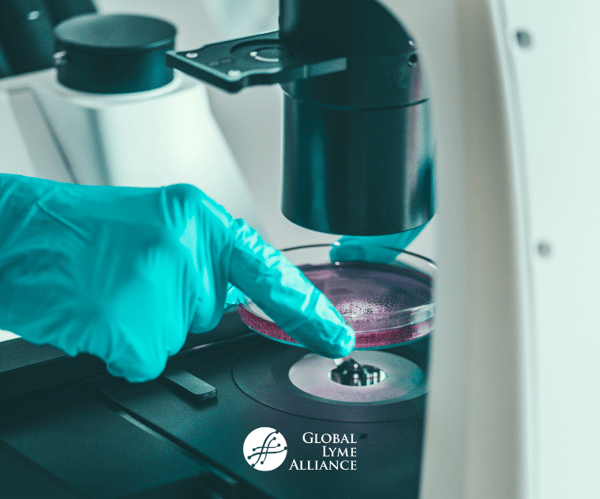
- GLA provides funding to Dr. Armin Alaedini to study antibodies in patients with post-treatment Lyme disease. These findings open a body of work identifying immunological correlates of persisting symptoms in Lyme disease patients.
- GLA sponsors a conference at Cold Spring Harbor Laboratory, NY on the subject of co-infections in Lyme disease, in recognition that tick bites may lead to infection by multiple pathogens.

- GLA creates a Scientific Advisory Board (SAB) of world-renowned experts to fund the most innovative and promising research projects in the field. The SAB follows a rigorous process using guidelines established by the National Institutes of Health (NIH). GLA research grantees must meet the same scientific standards that the NIH adhears to. This ensures YOUR donor dollars are going to be used for a study that will be likely be published.
- GLA funds the SLICE 1 study: Study of Lyme Immunology and Clinical Events at Johns Hopkins University. This study is led by Drs. John Aucott and Mark Soloski, who launch a pivotal project to measure risk factors, symptom patterns, longitudinal course and associated biomarkers in acute LD patients. This groundbreaking work results in dozens of peer-reviewed publications that enhance the immune response in Lyme disease. They also help to broaden acceptance and understanding of post-treatment LD syndrome.

- The Columbia University Lyme and Tick-Borne Diseases Research Center, the first of its kind in the U.S., was funded by GLA with a $2 million endowment, and it officially opened under the leadership of Brian Fallon, M.D. Many important studies and collaborations have resulted from the establishment of the center.
#GivingMeansProgress
Global Lyme Alliance prides itself on identifying cutting-edge, promising research initiatives, as well as high-impact patient programs and services. As seen in our Timeline of Accomplishments above, since our inception, GLA has been the driver of major scientific breakthroughs that have led to paradigm shifts in the scientific consensus and treatment of Lyme and tick-borne diseases. Always thinking outside of the box, we actively pursue meaningful research to bridge the gap between science and medicine, with our fundamental goal of improving medical outcomes for patients. GLA is the only organization within the Lyme vertical to maintain the following comprehensive services:
- Ambassador Program
- A Biorepository
- Prevention Education
- Patient Services
- Peer to Peer Mentoring
- Vibrant Research Program
As an organization, GLA has maintained a 5-year annual overhead rate of 10% or less to ensure that funds are going directly towards Lyme disease research and our programs.
With your support we are able to make huge strides in finding answers to this insidious disease. We are giving hope to those that are suffering from Lyme and other tick-borne illnesses.
Thank you in advance.
Thank you for your steadfast support of GLA. Your commitment allows us to continue to fight for those who need the hope we provide in a world dimmed by Lyme.Paul Ross Chairman, Global Lyme Alliance
Discoveries made over many years by GLA-funded scientists have revealed secrets about the Lyme bacterium fostering development of improved diagnosis and treatment options for this insidious tick-borne disease.Timothy Sellati, P.h.D. Former Chief Scientific Officer, Global Lyme Alliance

Become a Monthly Donor
Join us in our unmatched and unwavering determination to prevent, treat, and conquer Lyme disease.
Consider becoming a monthly donor. Your monthly support leads to more research in the fight against Lyme for better tests, treatments and through our education and awareness initiatives, fewer people suffering the devastating effects of chronic Lyme disease.
Your monthly support today helps create breakthroughs that will help save you and the ones you love.
Join us in the fight!

Stay in touch with GLA
Sign-up for our newsletter, and we'll send you monthly updates of our research progress, GLA events, our newest blogs and recent Lyme news so can stay up to date with what's going on in the Lyme community.
Or Follow Us On Social